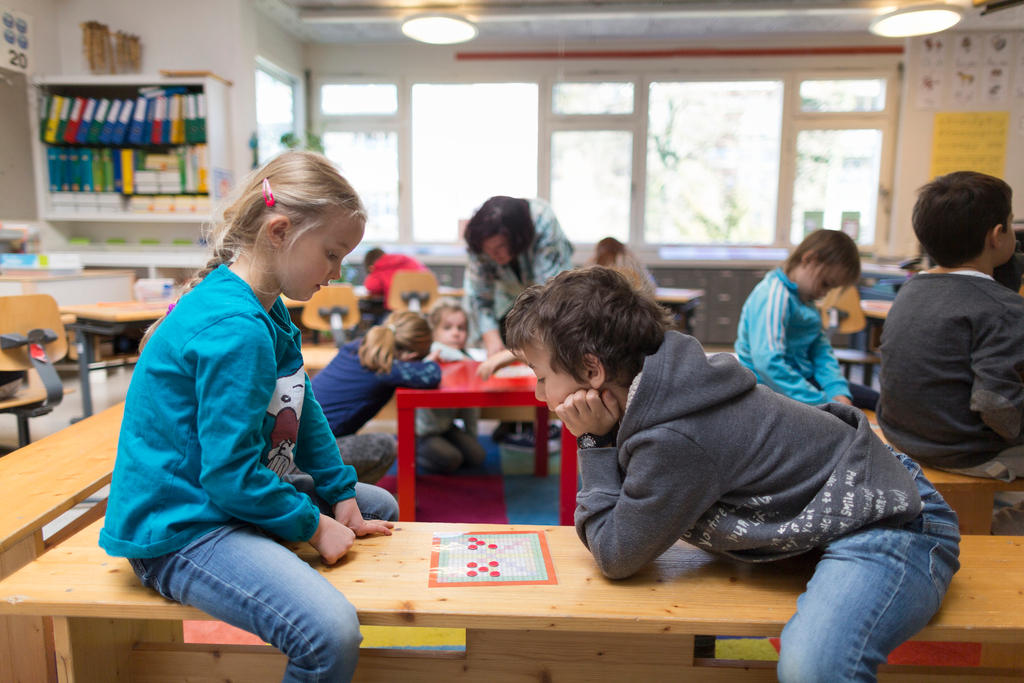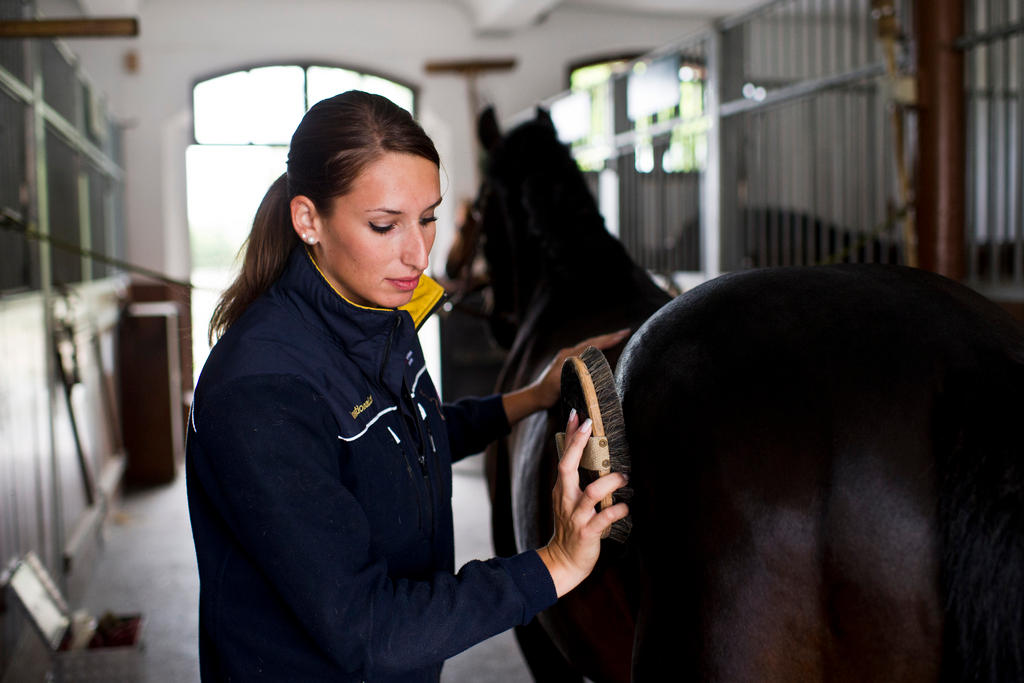Disadvantaged students ‘falling behind’ in Switzerland

Social background is more closely linked to success at school in Switzerland than it is in many other countries according to a new OECD report. On the positive side, disadvantaged pupils show more resilience.
The Organisation for Economic Co-operation and Development report, Equity in Education: breaking down barriers to social mobilityExternal link, published on Tuesday, explored how well education and school systems provide equal learning opportunities for children regardless of socio-economic background.
It is based on a comparison of the Programme for International Student Assessment (PISA) 2015 results, which is widely viewed as a key yardstick for evaluating the quality, equity and efficiency of school systems.
OECD definition of disadvantaged
The OECD defines socio-economically disadvantaged students as those whose score on the PISA index of economic, social and cultural status (ESCS) is among the bottom 25% of students within their country or economy. The PISA index includes three variables: parents’ highest level of income, parents’ highest occupational status, and home possessions, including books in the home. For the definition of disadvantaged schools, OECD refers to the bottom 25% of the national distribution of the school level ESCS index, which is calculated as the average ESCS index among students in the school.
Variations
In Switzerland, students’ socio-economic status accounts for a 16% variation in students’ science performance in PISA 2015 compared to the OECD average of 13%. Estonia and Norway showed the lowest variation at 8%.
On a point basis, a comparison of the most recent PISA science scores found a 106-point achievement gap – the equivalent of three-and-a-half years of schooling – between advantaged and disadvantaged students. This is much higher than the OECD average of 88 points.
When disadvantaged children attend advantaged schools, their performance gain is equivalent to almost three years of school in Switzerland. The percentage of disadvantaged children attending disadvantaged schools in the country – schools where other students tend to be disadvantaged as well – is slightly lower than the OECD average.
The role of social status has been the subject of discussion in Switzerland. A recent study by the Federal Statistical Office found that students whose parents studied at university are more likely to get into gymnasium, the secondary school that prepared students for higher education.

Building resilience
The study also looked at students’ resilience, an area where Switzerland ranks far above the OECD average. Some 43% of disadvantaged students in Switzerland, compared with an OECD average of 26%, are “socially and emotionally resilient”, meaning that they are satisfied with their life, feel socially integrated at school and do not suffer from test anxiety. Disadvantaged students who are socially and emotionally resilient tend to do better academically.
Globally, the academic performance gap between advantaged and disadvantaged children develops from as early as 10 years old and widens throughout students’ lives. On average, more than two-thirds of the achievement gap observed at age 15 was already seen among 10-year-olds.
To address the gap, the report authors recommend additional resources towards disadvantaged schools and reducing the concentration of disadvantaged students in schools. It also says that early access to education is key to help children acquire essential social and emotional skills.
The report also encourages schools to provide more support for teachers so they can identify and manage students’ and parents’ needs.

More
Social status plays ‘no role’ in career choice

In compliance with the JTI standards
More: SWI swissinfo.ch certified by the Journalism Trust Initiative























You can find an overview of ongoing debates with our journalists here . Please join us!
If you want to start a conversation about a topic raised in this article or want to report factual errors, email us at english@swissinfo.ch.